
Transcription
Victim Restoration:
The Lost Side of Justice
By Daniel Labbe
We often hear about criminal justice, punishment versus rehabilitation, and debates on appropriate sentencing guidelines, but what about the victims of crime? How much energy is focused on victim restoration?
I’m certainly interested in seeing the criminal justice system, and public opinion, lessening its focus on punishment and increasing rehabilitation efforts, but I am also concerned with the apparent lack of concern over victim restoration. It seems we are more motivated by anger and fear concerning criminals than we are by compassion for the victims of crime. How many times do you hear about the efforts of the court to work with the victims after the case is over versus hearing about proper punishment and sentencing for criminals? We may talk of getting justice for the victim, but that justice focuses its energy on the criminal, not the victim.
Some states have made efforts to replace the Criminal Justice System with a Restorative Justice System. Restorative justice involves long term involvement with both the offender and the victim, as well as the community. Exactly what is being restored? Lets look at an ideal, something such a system works toward, believing this idea is the very best outcome possible.
For the offender this might involve an appropriate prison sentence, fines, and supervision. Efforts to help the offender realize the impact of his or her actions and guiding the offender to take full responsibility for the crime and its impact. At this point rehabilitation and education efforts can be pursued if the offender has a clear understanding of the impact of his or her crime and has taken responsibility for it. After rehabilitative programs are completed and the sentence is served then efforts to help the offender safely reintegrate into society can be undertaken, and supervision – if necessary – is carried out.
Some of this work, like understanding the impact of the crime, may involve the victim if the victim is willing and the offender is ready.
Victim restoration might involve proper compensation for lost or damaged property, stolen money, etc. if possible, seeing the offender being held accountable for the crime, and emotional and mental restoration, if desired. This latter part may pertain to those victims who have suffered significant emotional or psychological distress. Part of this restoration may include counseling, and it may include being able to confront the offender in a safe setting. Many victims suffer long term distress involving anger, shame, fear and a host of other issues. In ideal circumstances it has often been helpful for both victims and offenders to meet under safe, supervised conditions or to communicate through telephone or letters. In such situations the victim can express the impact the crime has had on their lives, they can express their feelings and ask the offender questions. The offender gets a first-hand understanding of the impact of his or her crime, and gets to express any remorse he or she may have, and what if anything he or she plans on doing to make sure it never happens again.
Such meetings have proven immensely helpful for both the victim and the offender time and time again. Some states have even created a system to promote such meetings because of the healing and restorative effects they consistently create.
Again, this is an ideal and not always possible. But shouldn’t it be the model that we worked toward, the model we hold as an ideal that we try to implement whenever possible?
What’s troubling is the sentiment that punishment is justice while the victim is left with unresolved anger and fear. What kind of justice system is that? Yet it is the one most common in the United States.
Personally, I would welcome a restorative justice system. I have dedicated myself to taking responsibility for my actions (though I’ll never know the full impact of my crimes because Massachusetts does not promote restorative justice) and doing everything I can to address the issues underlying my crimes. Today , I can honestly say I am the person I’ve always hoped to be and I plan on dedicating my life to helping others rehabilitate themselves. But what about the two main victims of my crimes? What has the State done to help heal their emotional and psychological wounds? What effort has been made to see that what research and restorative psychology deems as the best case scenario for healing is actually taking place for the victims of my crimes? It may be the case that they don’t want any part of restorative justice, but how would they even know what it is and its benefits if the State hasn’t implemented or promoted such a system?
If there was a system advocating restorative justice models and educating the public on its benefits, how many of the people victimized by crimes would participate? We can’t tell for sure, but it would be a hell of a lot more than current standards.
Victims have often come to the conclusion that they must partake in a restorative model on their own in order to gain the healing of anger, shame, and other issues. We can find many examples of this if we look, so why not help this process along by creating a system that puts the structure in place to educate people and make this option available?
To me justice is victim restoration and criminal rehabilitation. What’s the argument against this model?
Please share your thoughts with a comment.
Thank you.
If you felt this blog post makes a valid point, please feel free to share it. Thank you.
Other posts by this author
|
2016 aug 4

|
2016 jun 25

|
2016 jun 9

|
2016 may 5

|
2016 mar 11
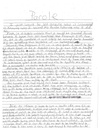
|
2016 feb 7

|
More... |
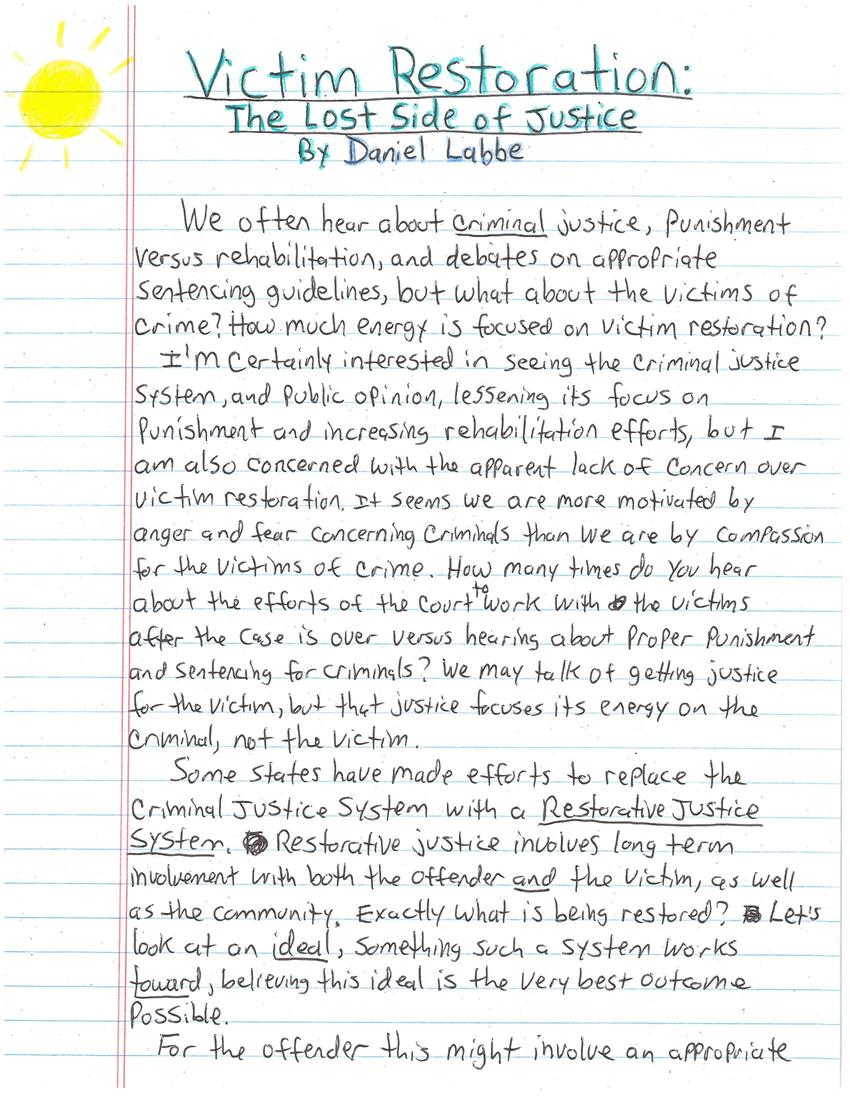
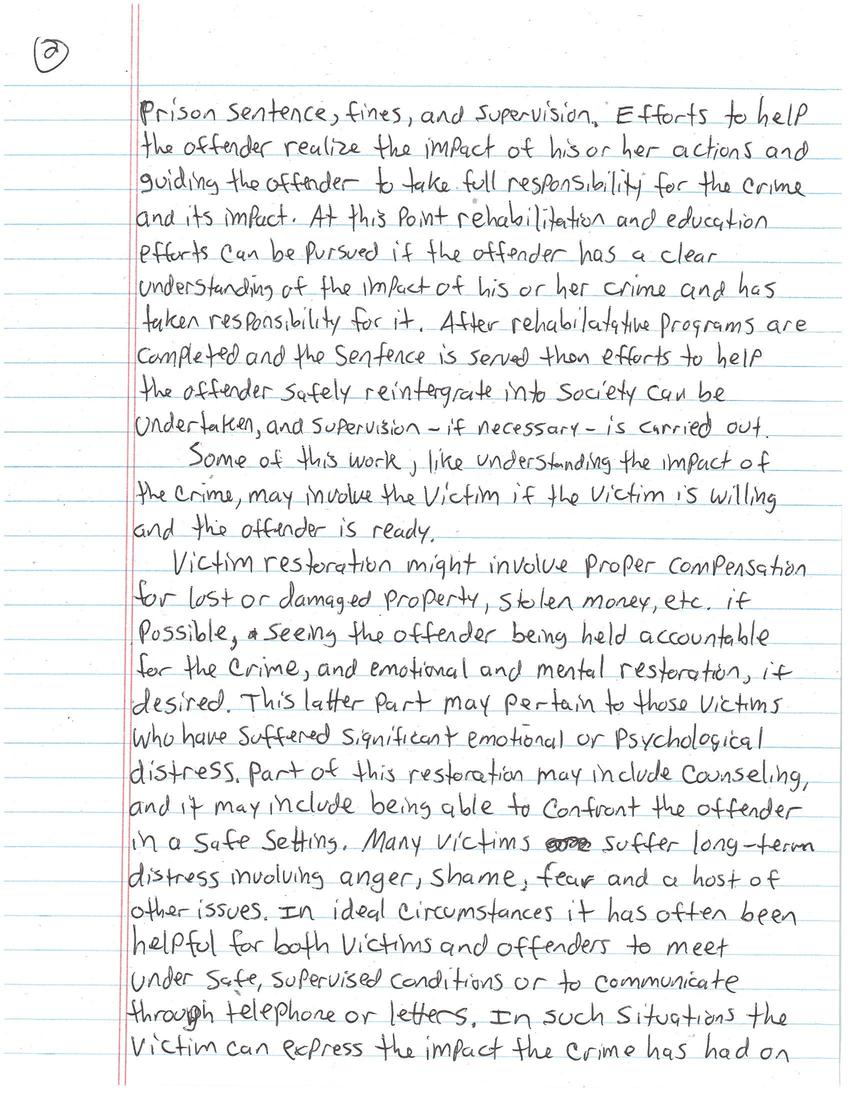
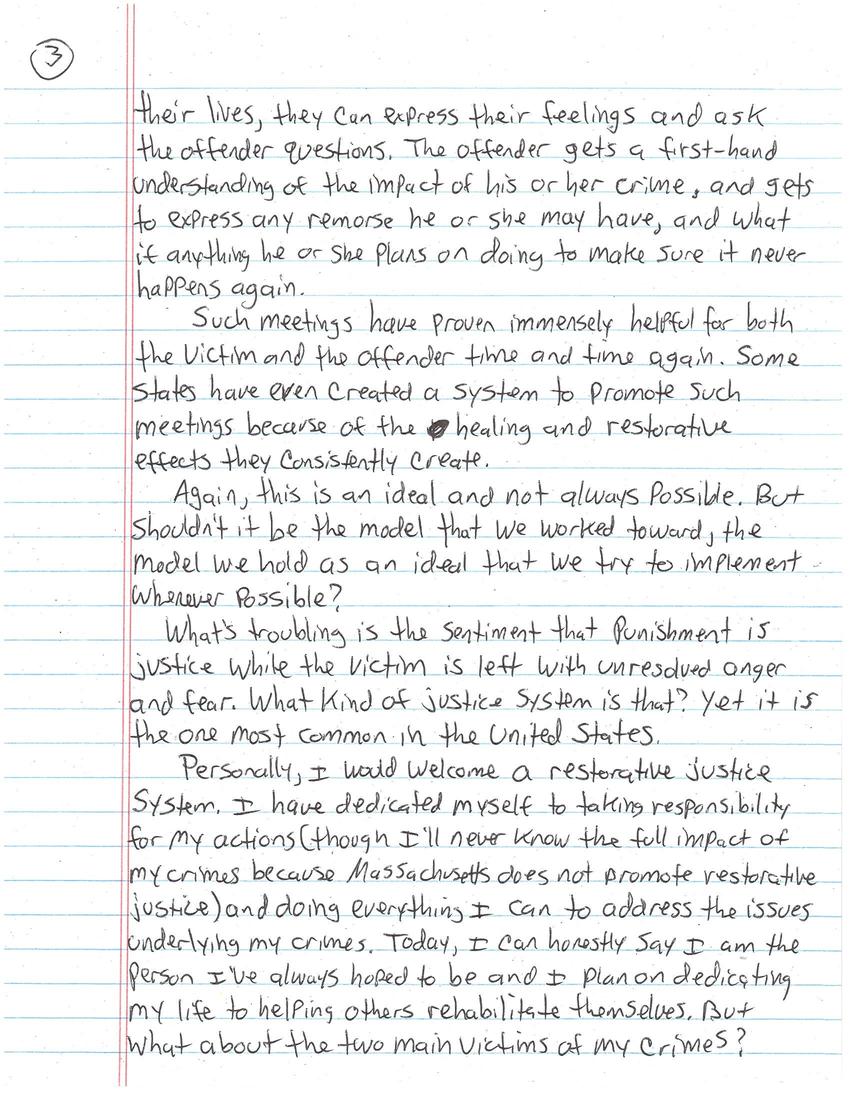
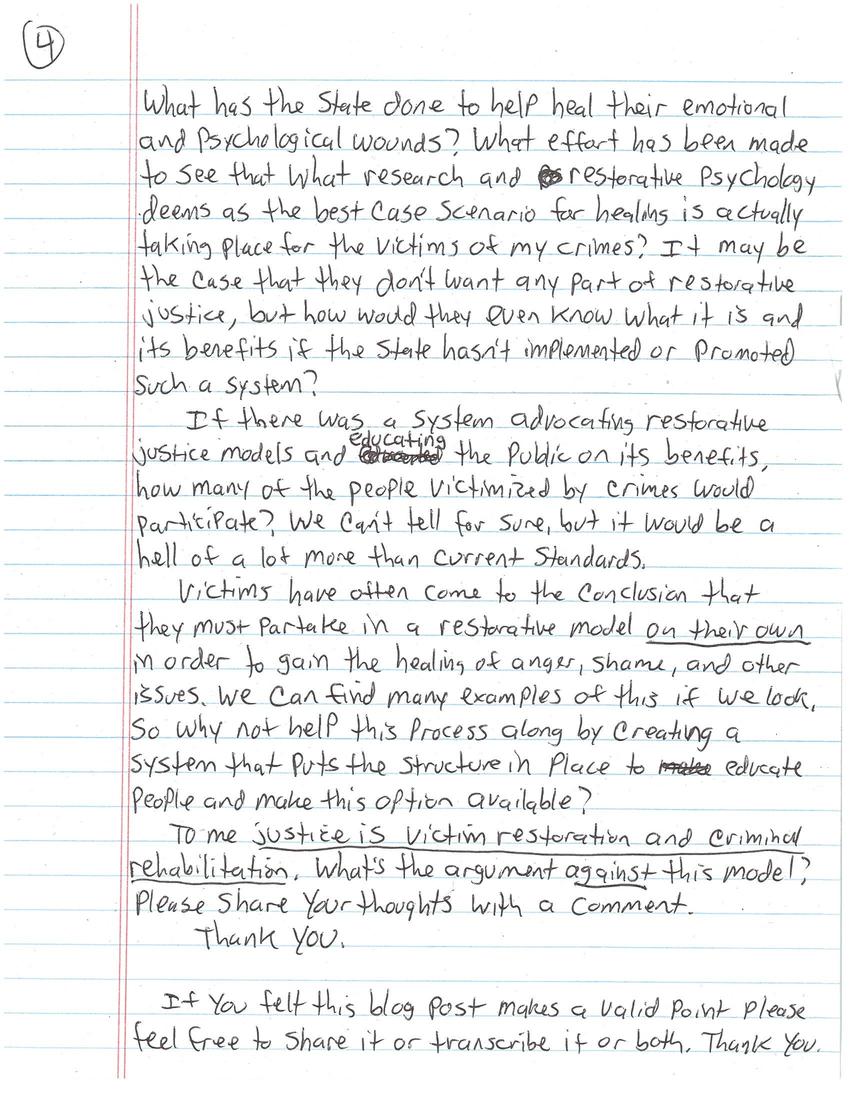

Replies (2)
Another fantastic post. What resonated a lot for me about this are rape, sexual assault, and domestic violence crimes. The system makes it so that when victims/survivors pursue criminal cases, they often suffer so greatly, sometimes feeling as if they're reliving it all over again. This could be because of stigma, of feeling blamed during trials or in interactions with the criminal justice system, seeing their attacker again potentially, reliving it, etc. Victim advocates help this, but they are not widespread enough or given enough resources to fully counteract the damage across the country. We could and should do a much, much better job with victim restoration with this issue, and in general.
Thanks for this post.
Susan
I am reading an article that made me think of you. It is called "Response to Injury: Toward Ethical Construction of the Other" by Hugo Kamya and David Trimble in the Journal of Systemic Therapies, Volume 21, Number 3, year 2002. From the abstract:
"Retaliation if seen as a monologic form of discourse, in contrast to the dialogic forms of discourse that are necessary for healing and reconciliation. The article proposes two paths to restoration of dialogue: emotional reconnection between victim and victimizer, and connection of victims with witnessing audiences. Restorative justice is offered as one vehicle for restoration of dialogue."
Thank you for continuing to write, to be involved, to dialogue, and to connect.
Susan